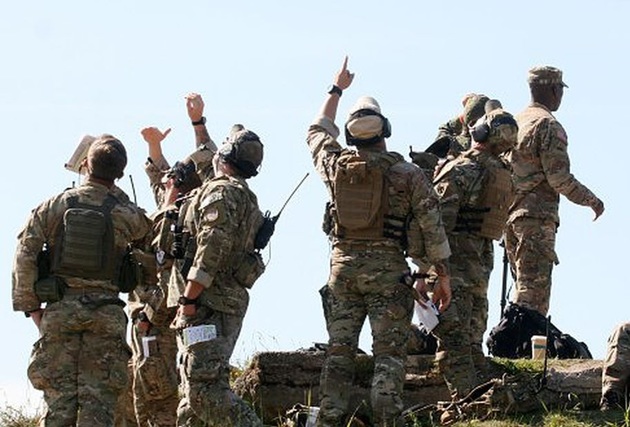It is well known that NATO member states agreed at the 2016 Summit in Warsaw to enhance NATO’s military presence in the eastern part of the Alliance. So, the arrival of the multinational Allied battlegroup in Latvia in June 2017 concluded the deployment of forces under NATO’s Enhanced Forward Presence in the Baltic States and Poland.
Since than NATO has been actively enhancing its military capabilities in the Baltic States. It increased the number of troops and deployed heavy weapons including tanks, armoured vehicles and artillery. Canada is the framework nation for the battalion-size NATO battlegroup deployed to Latvia, Eurasia Review writes in the article NATO Invents New Threat In Baltic States – OpEd.
It was said that NATO’s enhanced forward presence is defensive, proportionate, and in line with international commitments. Though it was absolutely evident that NATO pursues not only the stated goals, but some hidden ones. Among them are convincing of the need to increase defence budgets of Latvia, Lithuania and Estonia, political support at all levels, loyalty to all decisions made by leading NATO member states. The more so, NATO has invented a new threat in the Baltic States. All of a sudden the Baltic States have been turned into a drone test site. In order to justify NATO new interests, it was said that unmanned aerial vehicles are an emerging threat to NATO soldiers deployed around the world, and especially in the Baltic region.
The leadership of the enhanced Forward Presence Battle Group in Latvia even held a symposium in Camp Adazi in November to talk about how to deal with the drone threat. Latvia’s Battle Group Commanding Officer Lieutenant Colonel Trevor Norton said that NATO recognized this threat as they prepared to deploy to Latvia, and made it a priority to come up with solutions. “When I was looking at our adversaries and the way in which they have conducted recent operations around the world, it was obvious that they used UAS to great effect,” he said. “I determined that if we were to continue to be successful in deterring foreign aggression, we must demonstrate the ability to counter the threat of UAS. This is what led me to the idea of running a counter-UAS symposium and exercise.”
In his turn Latvian Minister of Defense Artis Pabriks acknowledged that “the Latvian Defence Department has taken into account the lessons learned from the use of drones in the Nagorno-Karabakh conflict.” It should be said that this conclusion looks more than odd. Does Pabriks consider Armenia and Azerbadzan as adversaries?
The symposium combined presentations by experts from the United Kingdom and Canada with open discussion between members of all nine nations of the Battle Group as well as members of the Latvian National Armed Forces about the capabilities they have in Adazi, and how they could use them to minimize the UAS threat. Finally, they tested some of their weapon systems in shooting down target drones at the Camp Adazi range. And, probably, this was the main goal.
Major Matt Bentley, the organizer of the symposium, stressed that this is a complex problem that will not be solved with one symposium. He said it was an important first step in the process of developing practices and capabilities that can defend Allied soldiers from drones while defending Latvia. Following the symposium, the Battle Group drafted a service paper to send to all sending nations for each ally to consider as they develop ways to defeat this threat.
According to LCol Norton, as Allied nations develop ways and means to combat the threat posed by UAS, the Battle Group will be in a good position to test them in a multinational context. In the meantime, the Battle Group will continue to build and refine tactics, techniques and procedures using the tools at hand to mitigate the threat.
So, NATO invented a new threat in the Baltic States to convince these countries in need to pay more and to deploy more foreign troops on their territory. And all this against the backdrop of a pandemic and an acute shortage of funds for medicine in Latvia.






